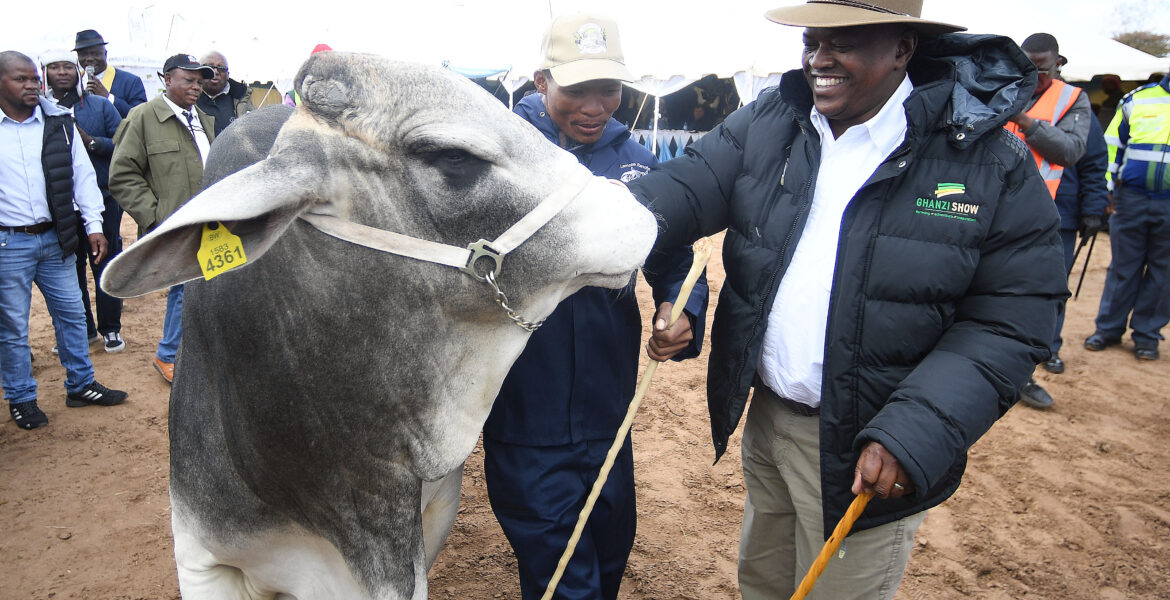There are early signs of resilience and building back in Ghanzi as farmers look beyond the COVID storm and restock in livestock and venture into horticulture and other enterprises.
GAZETTE REPORTER
Ghanzi District is showing early signs of recovery from the COVID-19 pandemic, with farmers restocking their livestock and diversifying their product portfolios.
Information gathered from the recent Ghanzi Agriculture Show indicates that the district is not only reclaiming its status as the cattle production hub of Botswana but has also ventured into horticulture and other enterprises.
In his keynote address at the Ghanzi Agricultural Show which took place recently, President Mokgweetsi Masisi noted that the COVID-19 pandemic took an unprecedented toll on farmers in Ghanzi who cumulatively lost 22 tonnes of watermelons and 12 tonnes of sweet reeds during the 2019/20 ploughing season because they could not sell their produce due to movement restrictions.
Much lost in the pandemic
“Furthermore, seven tonnes of cowpeas were also lost due to lack of labour for harvesting while 1,200 litres of milk were lost due to prolonged closure of schools, which usually provided the market,” said the President.
However, there are early signs of resilience and building back as farmers look beyond the COVID storm. According to statistics from the agricultural vaccination rollout during the 2021/22 financial year, Ghanzi boasted of 161,833 beef cattle, 138 dairy cattle, 16, 079 sheep, 31,887 goats and 6,455 horses.
During the financial year 2021/2022, the Ghanzi District also had an offtake of 66, 184 cattle compared to 50, 673 in 2020/21. In the same financial year, the district recorded an offtake of 237 sheep and 560 goats, producing 5.18 tonnes of mutton and 17.16 tonnes of chevron.
Ghanzi is also becoming a hub of potato and onion production. During the 2021/22 ploughing season, farmers in he district risked their fortunes on rain-fed agriculture and planted 1,732 hectares of maize, cowpeas, sweet reed, groundnuts, jugo beans and other crops.
Cattle exports
The livestock export market has also presented opportunities for the farmers who exported 69,932 cattle between 1st October 2020 to 31st May 2022. Of this number, 65,842 were exported to South Africa while 4, 090 were exported to Namibia.
Meanwhile, Ghanzi is a key cluster that feeds into the Lobatse Special Economic Zone (SEZ), which is delineated as a Meat and Leather City at which key economic activities will include leather production, meat processing and dairy production.
The Special Economic Zones Authority (SEZA) has undertaken to work closely with the Ministry of Agriculture to ensure that support programmes like LIMID and ISPAAD are fully utilised to increase output in the region. The Authority has also completed the Master planning of the Lobatse SEZ at a total cost of P8.5 million.
According to SEZA Chief Executive Officer (CEO), Lonely Mogara, the masterplan, which entails a business case and urban design masterplan, positions the Lobatse Meat and Leather City as a vibrant processing ecosystem that will produce sausages, canned beef, soaps, leather garments and upholstery for vehicles.

